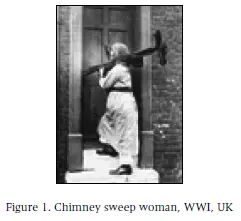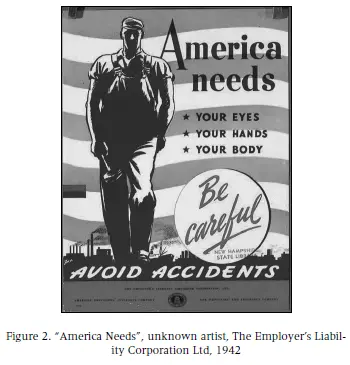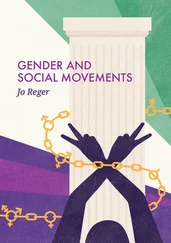It may not be immediately apparent that the term “propaganda” is much related to “advertising”, but the understanding of this term is a matter of perspective. Throughout history, many types of propaganda have been directed at social groups, or entire nations. Propaganda has particularly been associated with governmental actions, especially in the wartime efforts of the diverse contenders. This type of propaganda is officially publicized by governmental departments or agencies. Another type of propaganda is unofficial and much more subtle. It is, therefore, sometimes difficult to detect as “propaganda” and is often limited to “women’s worlds”, i.e., women’s magazines and television programs, fashion media campaigns, etc., or “men’s worlds”, i.e., hunting, cars, sports and “lads” magazines (i.e., soft pornography, or, actually, perhaps not so “soft”).
The article considers both official and unofficial propaganda (the latter being commercial advertising) as part of the techniques of persuasion. The techniques analyzed focus mostly on the media messages directed towards women though not exclusively these messages. Although not exclusively directed to women (e.g. government messages to the general populace), many media messages use the same techniques: establish authority, exploit existing beliefs, create fear, imply that everyone agrees, be selective about the truth, establish a leadership cult, etc. At some points, in order to understand the symbolic nature of those messages targeted toward female audiences, the construction of men’s roles in official and unofficial campaigns must also be pointed out. Thus, messages using the same techniques but intended for the public in general are considered in comparison to those that have a specifically gender-targeted public.
The outline of the present article is as follows. In section 2, the article will present some motifs and methods used in official propaganda so that its relation to advertising (unofficial propaganda) can clearly be identified. In section 3, the study will focus on official propaganda (sponsored by the State, religious institutions or political parties) and section 4 will examine unofficial propaganda (considered as commercial advertising) – less clearly discernible but equality effective ideologically, and possibly much more harmful.
As will be seen, in the historically specific articulations of official and unofficial propaganda, whether targeted towards individuals or demographic groups (including appeals to nationalistic attitudes), there almost always appears an underpinning of sex/gender, race, and economic/educational power. In this way, the present article wishes to contribute to the broader debate on the use of propaganda/advertising in supporting or challenging stereotypical conceptions of women (and men), but also of such concepts as applied to nationalities.
2 Motifs and Methods used in propaganda and advertising
In the Propaganda. Power and Persuasion exhibition, held at the British Library (London), from May 17 thto September 17 th, 2013, the library offered a succinct summary of the various ways of classifying propaganda: by using such general topics as origins, nation, enemy, war, health and the present-day social media, or by attending to methods or techniques that have been used, mostly by governments, political parties or other institutions, in order to convince the public to follow certain persuasions of ‘official’ thought (Welch 2013).
The most common motifs displayed in these posters, films, pamphlets, etc., are, first and foremost, war (with the corresponding sub-messages on public effort to “support the cause”), messages concerning the Great Depression, leader cult, public health (e.g., anti-drinking or anti-smoking campaigns), good homemaking features (e.g., How to save money by mending clothes), and semi-public messages as chronographed through a series of twitter postings. While the motif, for instance, may be the war effort, the sexes are often treated very differently in the types of messages that are directed towards them, and the same motif may be treated differently according to the State that is responsible for the message. British posters most frequently show wartime women at home, caring for the children, mending, repairing and canning (“Grow your own vegetables”), or carrying out poorly paid jobs, such as chimney sweep, as pictured in Figure 1. In this case, according to the account given in the British National Archives, this women was taking over the job of her husband, who had gone off to fight in WWI.

As the British National Archives documents note, although the government and the press tended to exaggerate the degree to which women had taken over men’s jobs during WWI, in reality most male-dominated professions were still closed to women (doctors, dentists, architects), and in those areas in which women were more frequently employed, they were considered as substitutes and their wages were inferior to those of male workers.
Wartime men, both in the UK and the US, are most often shown in the workplace, mostly the factory, as in Figure 2 (“America Needs”, 1942), a poster from WWII. Notably they are all blue collar workers and are portrayed as heroic, muscular giants, as a way of suggesting that their superior skills and strength will be able to maximize industrial production in order to defeat the enemy.
Because of the lack of reference to them (they do not appear in posters), it is not clear how white-collar males were supposed to have contributed to the war effort, either in the UK or the US. As mentioned in the introduction to this article, in the analysis of this propaganda material, there always seem to have been various subclassifications according to race and social class (as well as to gender).
Regarding the techniques, among the very oldest modi operandi is the establishment of authority by using symbolism to resonate with deep psychological human needs, for instance, by placing the emperor’s or dictator’s image on coins or by erecting statues of the national figure to be revered. The establishment of a leadership cult will encourage the public to believe that their personal fate depends on the characteristics and actions of this public figure. This technique exploits existing convictions which build on attitudes and beliefs that the public already holds.

The connection of the latter technique of cult worship with the workings of present-day commercial advertising is evident in the modern-day extension of the commercial use of popular actors or sports figures in the promotion of brand-name goods. As will be seen below, even though very similar commercial goods are being suggested to the public, the manner of presenting these depends on whether the product is considered for “masculine” consumption, and therefore accompanied by a picture of a man, or “feminine” consumption and thus publicized by using a well-known female figure. What could previously be seen as “authority association” is today used in advertising through a marketing technique called “branding”. “Brand identity” is understood as an advertising strategy employed to suggest and promote life-style changes through the use of trademarks, logos and icons, etc., in order to create a dialogue with the consumer on an instinctive and rather unconscious level.
Another technique frequently used by dictators or political parties is the stimulation of feelings of fear, for example, through extremely repressive measures, or constant fear-mongering messages. This technique blends in with the previously-discussed “authority figure” methods, except that the fear is translated into anxiety, about how one is perceived and about one’s perception of individual identity.
Читать дальше














